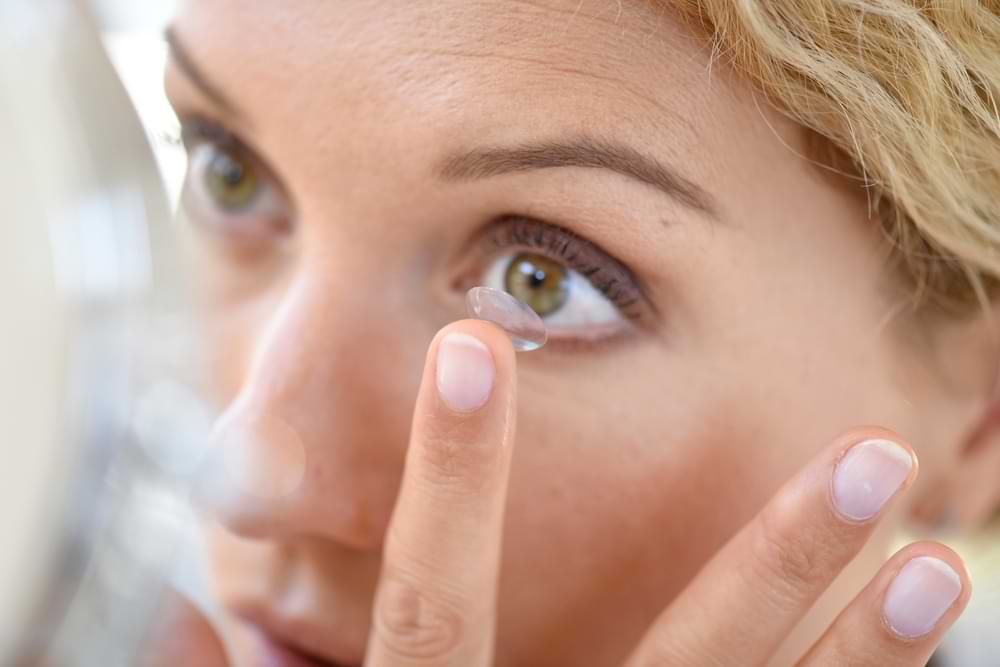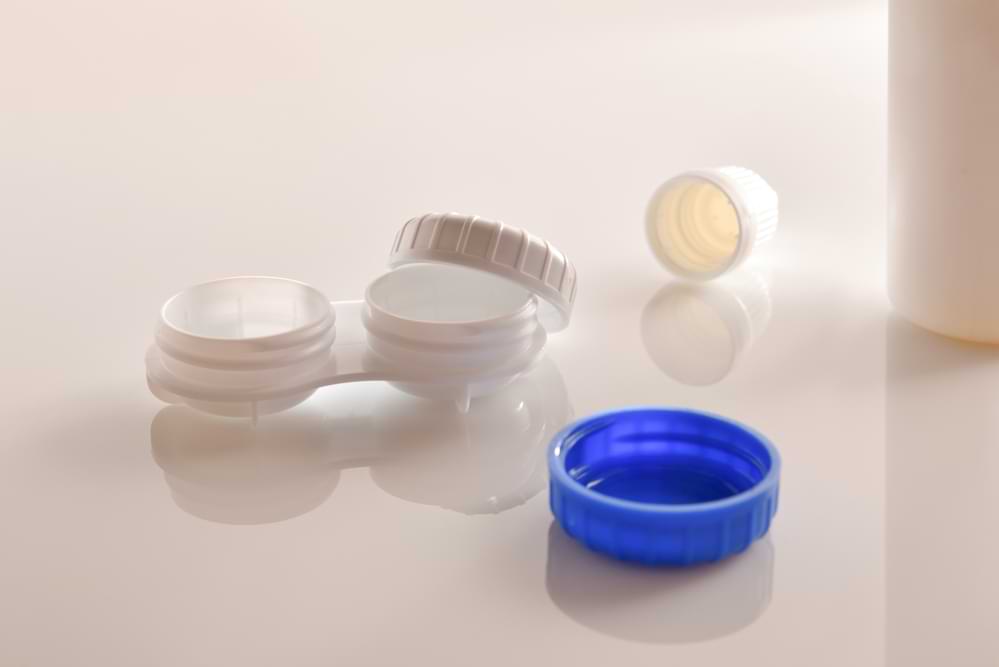When choosing between eyeglasses and obtaining a contact lens prescription, it’s essential to consider factors like your lifestyle, comfort preferences, vision requirements, and overall eye health. Contact lenses, offering freedom during activities and clear peripheral vision, address common issues like fogging that you might experience with glasses. They provide a more natural way of correcting vision as they move with your eyes. And contrary to what you might have heard, most people find they aren’t difficult to wear, once they learn proper use and management.
If you lead an active lifestyle or prefer not to wear glasses, a contact lens prescription might be ideal for you.
I’m Dr. Nandita Chowdhury, the principal optometrist at Picton Eyecare, where my 15+ years in optometry culminated in opening this practice in 2022, serving the Wollondilly community with dedication. Each patient receives personalized care, blending clinical expertise with a deep understanding of their unique vision needs. At Picton Eyecare, we’re more than just an optometry practice; we’re an integral part of the community, committed to improving our patients’ vision and lives.
In this article, I’m going to do a deep dive into the various options available for contact lens wearers, the benefits of each, and who might be best suited for some very specialized contact lens products. I’ll discuss which lenses are better for comfort, better for durability, better for correcting more serious vision errors, and a lot more.
Soft Contact Lens Prescriptions: Comfort and Convenience
Soft contact lenses are made from flexible, water-absorbing plastics that conform to the surface of the eye, providing a comfortable and natural feel. These lenses are designed to be extremely thin and high in water content, which makes them soft and pliable, allowing for immediate comfort and ease of adaptation, even for first-time wearers.
The benefits of soft contact lenses are numerous. They provide a comfortable wearing experience, especially for extended periods, and are less likely to be dislodged from the eye compared to rigid lenses. This makes them an excellent choice for those with active lifestyles or who participate in sports. Soft lenses are also available in a variety of wearing patterns, from daily disposables that are convenient and require no cleaning, to extended wear lenses that can be worn continuously for several days, including while sleeping, as per your eye care professional’s advice.


Rigid Gas Permeable (RGP) Lenses: Clarity and Durability
Rigid gas permeable lenses, commonly known as RGP, GP, or “hard” lenses, are made from durable, oxygen-permeable materials. Unlike soft lenses, RGP lenses maintain their shape on the eye, which provides a stable and consistent refractive surface. This characteristic of RGP lenses is key to their ability to offer exceptionally clear and sharp vision.
RGP lenses are also a preferred option for individuals with keratoconus, a condition where the cornea bulges into a cone shape, or patients with other corneal irregularities. Some patients who struggle with RGP lenses may benefit from an approach called “piggybacking”. This essentially is layering a rigid gas permeable lens on top of a soft contact lens. The soft lens acts as a cushion and protective layer for the cornea, making the experience more comfortable. The disadvantage of using essentially two different pairs of lenses is the increased cost and lens maintenance required.
Additionally, RGP lenses are known for their durability. With proper care and maintenance, a single pair of RGP lenses can last for few years, making them a cost-effective option in the long run.
RGP lenses are also used in orthokeratology a form of overnight contact lenses that help to reshape the cornea, through moulding the surface of the eye and for slowing myopia progression.
However, it’s worth noting that RGP lenses generally require a longer adaptation period than soft lenses. New wearers may need some time to get used to the sensation of RGP lenses in their eyes. But for many, the exceptional clarity of vision they provide makes this a Specialty Contact Lens.
Lenses: Torics and Sclerals
Specialty contact lenses, such as scleral and toric lenses, are designed to meet specific eye conditions that standard contacts cannot address adequately.
Toric Lenses
Toric lenses, on the other hand, are soft lenses designed specifically to correct astigmatism, a refractive error caused by an irregular curvature of the cornea or lens in the eye, leading to blurred or distorted vision. Unlike regular spherical contacts that only correct myopia or hyperopia, toric lenses have two different powers in the lens. They address both the irregular shape of the cornea, and also adjust for focus on the retina; the cause of short sightedness or long sightedness.
The unique shape of toric lenses requires them to be positioned on the eye in a specific way to provide the correct orientation for astigmatism correction. Advanced design features, like stabilization zones or weighted areas, help keep the lens in the right position, ensuring consistent, clear vision while ensuring maximum comfort. This makes them a suitable option for individuals with astigmatism who have been unable to achieve clear vision with standard lenses.
Scleral Lenses
Scleral lenses are distinguished by their unique, large-diameter design that extends to cover the entire corneal surface and rests on the sclera, the white part of the eye. This design creates a tear-filled vault over the cornea, which is particularly beneficial for individuals with irregular corneas, as seen in keratoconus, or those with severe dry eye syndrome.
For people with keratoconus, where the cornea bulges into a cone-like shape, regular contact lenses may not sit properly on the eye. Scleral lenses provide a smooth optical surface that compensates for the irregularities of the cornea, offering clearer vision than could be achieved with standard lenses. Their larger size also ensures stability and reduces the risk of the lens dislodging, which is a common issue with smaller contacts.
In summary, both scleral and toric contact lens prescriptions serve as valuable solutions for individuals with specific eye conditions. Scleral lenses offer relief and improved vision for those with keratoconus or severe dry eyes, while toric lenses provide an effective means of correcting astigmatism, surpassing the capabilities of regular contact lenses.
How Do Multifocal Contacts Work?
Think of multifocal contact lenses like a pair of glasses that lets you see up close, at a medium distance, and far away, all in one lens. They have special areas on the lens for seeing different distances.
- How They Work: Multifocal contacts are designed so you can see things near and far at the same time. They have different strengths all over the lens, and your eye gets light from both near and far objects together. Different styles of multifocal contacts include the Ring Pattern with varying strength circles, the Gradual Design that changes strength smoothly, and the Split Design similar to bifocal glasses with distinct areas for distance and close-up vision.
- Getting Used to Them: It might take a little while to get used to multifocal lenses but with a variety of options available, discovering your perfect fit has never been easier.
- Tailored for You: Multifocal lenses can be customized just for you, taking into account your lifestyle and work requirements.
Novelty and Enhancement: Coloured Contact Lens Prescriptions
Coloured and cosmetic lenses have become popular options for those looking to change their eye colour for aesthetic reasons or to enhance their natural eye appearance while also correcting vision. These lenses come in a wide range of colours and designs, allowing individuals to alter their eye colour temporarily.
However, it’s important to approach the use of coloured and cosmetic lenses with the same level of care as regular contact lenses. Even if used solely for cosmetic purposes, these lenses sit directly on the eye and can potentially cause harm if not used properly.
A common misconception is that cosmetic lenses do not require a contact lens prescription. In reality, like any contact lens, they need to fit correctly to avoid problems such as scratches on the cornea.
It’s also crucial to follow proper lens care and hygiene practices with coloured lenses, just as with standard contact lenses, to reduce the risk of eye infections or irritation.
Contact Lenses for Myopia
MiSight one day contact lenses are a revolutionary advancement in the treatment of myopia, especially in younger individuals. These specialized contacts are designed to not only correct vision but also to slow the progression of myopia (short sightedness) over time.
The unique design of MiSight lenses employs a concentric ring pattern, with different zones specifically tailored to control how light focuses on the retina. This innovative approach has been shown to effectively manage myopia, reducing its advancement.
Being daily disposables, they offer the convenience of single-use, ensuring a fresh, hygienic pair every day, which is particularly beneficial for younger wearers who may find maintenance of reusable lenses challenging.
MiSight lenses provide a dual benefit: clear vision and a proactive approach to controlling myopia, making them an excellent choice for children and teens experiencing short sightedness.
What If I Get an Eye Infection?
If you suspect an eye infection related to contact lens use, the first and most important step is to stop wearing your contact lenses immediately. Continuing to wear them can aggravate the infection and potentially cause more serious complications. Remove your lenses carefully and store them in their case; they may need to be examined by a healthcare professional later. Switch to wearing glasses in the meantime to give your eyes a chance to recover.
The next crucial step is to see an eye care professional as soon as possible. This could be an optometrist or an ophthalmologist, depending on the severity of the infection. They are equipped to diagnose the type of infection, whether it’s bacterial, viral, or fungal, and can provide the appropriate treatment. If you experience symptoms like redness, pain, excessive tearing, discharge, or blurred vision, it’s imperative to seek medical attention promptly. These professionals have the tools and expertise to examine your eyes thoroughly and prescribe the right course of action.
Treatment for an eye infection caused by contact lens use typically involves prescription medication, such as antibiotic or antifungal eye drops, depending on the nature of the infection. It’s essential to follow the treatment regimen as prescribed and complete the full course of medication, even if your symptoms improve before you finish the medication. Additionally, maintaining good lens hygiene, replacing your contact lens case regularly, and following all recommended lens care instructions are key steps in preventing future infections. Remember, your eye health is vital, and taking prompt and appropriate action in the case of an infection is crucial for maintaining your vision and overall eye health.
Frequently Asked Questions
Who CANNOT wear contact lenses?
Eye conditions, such as dry eye disease or blepharitis, may make wearing contacts uncomfortable and risky. A severe refractive error, allergies, or contact lens intolerance can also make wearing contact lenses difficult for some patients.
Can you sleep with contacts in?
As a one-off after a big night out, sleeping with your lenses in should only cause minor discomfort, redness or itching. However, making a habit of it could cause much more harmful effects, like ulcers and keratitis, the inflammation of the cornea.
What ages can wear contacts lenses?
There are no age restrictions. Infants and 90 year olds are able to wear contact lenses.
How many years can you wear contact lenses?
All contact lenses have an expiration date, usually between one and four years from the date of manufacture. It’s important not to use expired contacts, even if the package has never been opened.
Can you shower with contact lenses in?
All types of contact lenses, including extended-wear contacts, should be removed from your eyes before showering to prevent complications. Even though extended-wear contacts can be worn for multiple days at a time, you’re still putting your eyes at risk for infection or irritation if the contacts become wet.
Conclusion
The world of contact lenses offers plenty of choices, each with its unique benefits depending on your vision needs and lifestyles. From the comfort of soft lenses to the precision of RGP lenses, the versatility of piggyback/hybrid lenses, and the specialized solutions provided by scleral and toric lenses, there is a contact lens for almost every type of vision correction and preference. Innovations like multifocal lenses and coloured lenses further expand the possibilities.
However, with this variety comes the need for careful consideration and professional guidance. Choosing the right type of contact lens is not a decision to be made lightly or without expert advice. Your optometrist plays a crucial role in this process, helping you find the lenses that fit comfortably and best suit your individual vision requirements, lifestyle, and eye health.
If you would like to learn more about whether making the switch from glasses to a contact lens prescription is right for you, book an appointment with me at Picton Eyecare today.
You can call us on (02) 4603 2309 or arrange an appointment using the “Book Now” button in the navigation menu. We are conveniently located in the heart of Picton, NSW. There is plenty of parking available at the back of our store.

B.Optom (UoA), PGOT (UNSW)
Nandita is the principal optometrist of Picton Eyecare. She has over 15 years of extensive experience working in corporate and independent optometry practice. Opening Picton Eyecare in 2022 has fulfilled Nandita’s dream of an independent optometry practice, committed in serving the local community of Wollondilly and surrounding areas.
Nandita is caring and passionate about providing professional, personal and customised solution for every patient. She takes interest in all her patients and employs her skills and expertise to achieve the best possible outcome for the patient. She maintains great relationships with other medical professionals in the area.
Nandita is a local resident and has been working in the Southern Highlands for many years. She has a loyal following of patients who value her clinical and interpersonal relationships.
When not at work Nandita loves spending time with her family.
